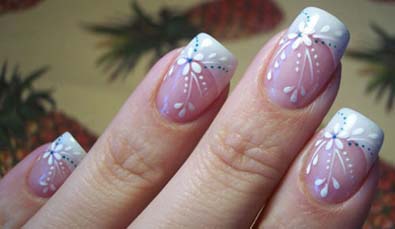 Cuticles
CuticlesYour nail's cuticles (the skin that surrounds the hard part of your nail) keeps your nails healthy and protects them from fungal infections. Cuticles are quite sensitive to injury. Do not cut them or pick at them; this may damage them permanently. Instead, after a shower, bath, or after soaking your nails, use a soft wooden stick to gently push back the cuticle. Overgrooming cuticles may cause them to thicken so be sure to use gentle care when grooming.
Nails
· Cleaning - If nails are dirty, use a bristled nail brush to remove debris from around cuticles or from under fingernails. Remove all polish with nail polish remover; do not pick at polish as that can damage the surface of nails.
· Shaping - Nails should be gently filed with a fine emery board, never with a metal file that can cause damage. File in gentle, long strokes from corner to center; do not "saw away" at nails. Keep the emery board poised at a 45 degree angle in relation to the fingertip to prevent damaging the nail layers. Do not file deep into corners of the nail; this weakens the nail. In general, shorter nails are easier to maintain.
· Protecting - Do not use your nails to scrape or lift anything, or to pull anything open. Wear gloves when washing dishes and use nail and hand lotion daily to keep hands and nails moisturized.
· Polishing - You may wish to use only a ridge-filling colorless coat on your nails to give them extra shine and strength. If you polish your nails, use a ridge-filling base coat followed by color and then a protective top coat for the best results. Give your nails at least an hour to dry before using your hands.
Original posted by Miss Fashion

